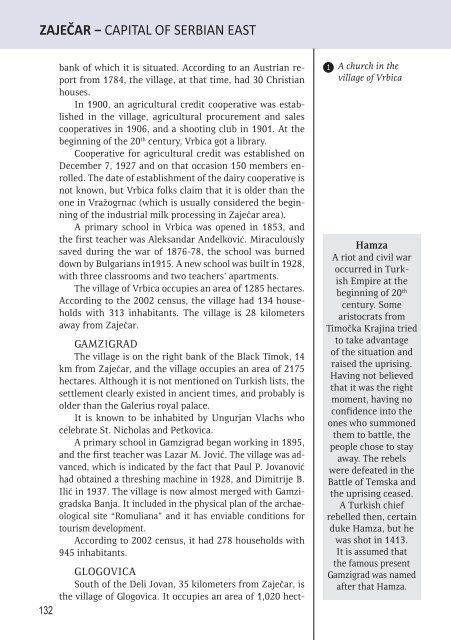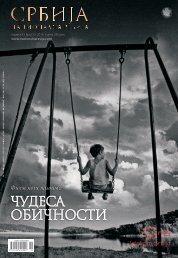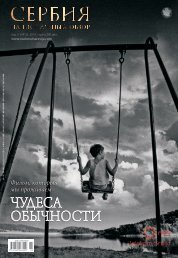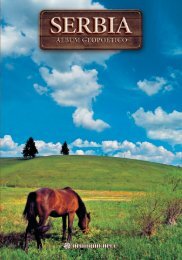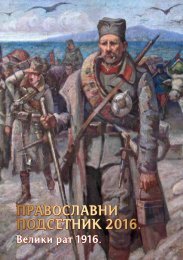Zajecar - engleski - niska rezolucija
Create successful ePaper yourself
Turn your PDF publications into a flip-book with our unique Google optimized e-Paper software.
ZAJEČAR − CAPITAL OF SERBIAN EAST<br />
132<br />
bank of which it is situated. According to an Austrian report<br />
from 1784, the village, at that time, had 30 Christian<br />
houses.<br />
In 1900, an agricultural credit cooperative was established<br />
in the village, agricultural procurement and sales<br />
cooperatives in 1906, and a shooting club in 1901. At the<br />
beginning of the 20 th century, Vrbica got a library.<br />
Cooperative for agricultural credit was established on<br />
December 7, 1927 and on that occasion 150 members enrolled.<br />
The date of establishment of the dairy cooperative is<br />
not known, but Vrbica folks claim that it is older than the<br />
one in Vražogrnac (which is usually considered the beginning<br />
of the industrial milk processing in Zaječar area).<br />
A primary school in Vrbica was opened in 1853, and<br />
the first teacher was Aleksandar Anđelković. Miraculously<br />
saved during the war of 1876-78, the school was burned<br />
down by Bulgarians in1915. A new school was built in 1928,<br />
with three classrooms and two teachers’ apartments.<br />
The village of Vrbica occupies an area of 1285 hectares.<br />
According to the 2002 census, the village had 134 households<br />
with 313 inhabitants. The village is 28 kilometers<br />
away from Zaječar.<br />
GAMZIGRAD<br />
The village is on the right bank of the Black Timok, 14<br />
km from Zaječar, and the village occupies an area of 2175<br />
hectares. Although it is not mentioned on Turkish lists, the<br />
settlement clearly existed in ancient times, and probably is<br />
older than the Galerius royal palace.<br />
It is known to be inhabited by Ungurjan Vlachs who<br />
celebrate St. Nicholas and Petkovica.<br />
A primary school in Gamzigrad began working in 1895,<br />
and the first teacher was Lazar M. Jović. The village was advanced,<br />
which is indicated by the fact that Paul P. Jovanović<br />
had obtained a threshing machine in 1928, and Dimitrije B.<br />
Ilić in 1937. The village is now almost merged with Gamzigradska<br />
Banja. It included in the physical plan of the archaeological<br />
site “Romuliana” and it has enviable conditions for<br />
tourism development.<br />
According to 2002 census, it had 278 households with<br />
945 inhabitants.<br />
GLOGOVICA<br />
South of the Deli Jovan, 35 kilometers from Zaječar, is<br />
the village of Glogovica. It occupies an area of 1,020 hect-<br />
1<br />
A church in the<br />
village of Vr bi ca<br />
Ham za<br />
A riot and civil war<br />
occurred in Turkish<br />
Empire at the<br />
beginning of 20 th<br />
century. Some<br />
aristocrats from<br />
Timočka Krajina tried<br />
to take advantage<br />
of the situation and<br />
raised the uprising.<br />
Having not believed<br />
that it was the right<br />
moment, having no<br />
confidence into the<br />
ones who summoned<br />
them to battle, the<br />
people chose to stay<br />
away. The rebels<br />
were defeated in the<br />
Battle of Temska and<br />
the uprising ceased.<br />
A Turkish chief<br />
rebelled then, certain<br />
duke Hamza, but he<br />
was shot in 1413.<br />
It is assumed that<br />
the famous present<br />
Gamzigrad was named<br />
after that Hamza.


